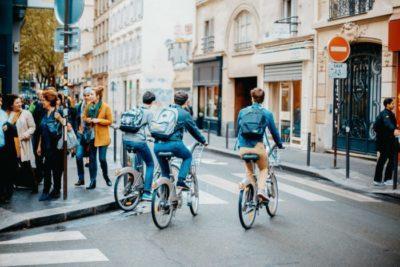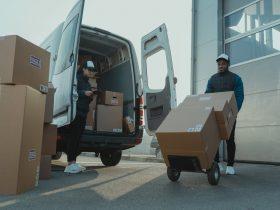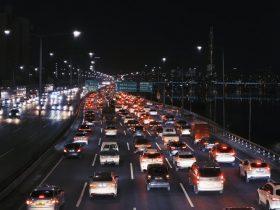A bike-sharing system built around the North Bay’s commuter rail line could debut this fall, adding new options for people to get around town while reducing local reliance on cars.
The plan envisions at least 300 bicycles stationed near Sonoma-Marin Area Rail Transit stops from Santa Rosa to Larkspur, as well as a few key sites in the more populated cities in Sonoma and Marin counties. The focus of the one-year pilot is increasing ways for passengers to get to and from the train, and then judging the program’s success for possible future expansion.
Eight potential suppliers have submitted proposals to the transportation authorities of Sonoma and Marin counties, which are partnering on the $800,000 grant-funded bike system. Transportation officials could pick the winner next week, setting themselves up this summer to fine-tune many of the details, including whether or not the bikes will be docked at central kiosks.
The bike-share program is slated to begin no later than next spring, and could start as soon as this fall.
“Our vision is to serve the whole corridor,” said Dana Turréy, senior planner with the Sonoma County Transportation Authority. “Bike-share systems are kind of designed around one-way trips, so we definitely need some coverage near the stations, but we’re really focusing on areas within fairly close proximity to SMART. We have some ideas, but exactly which ones kind of depends on the process with the vendor we select.”
Whether the new system will be comprised of traditional bicycles or the electric-assisted models growing in popularity around the country is for now another question left unanswered.
While the electric bikes require more oversight and are a little costlier to upkeep, they give riders a boost up to 20 mph as they pedal and have the advantage of appealing to a broader group of users, said Turréy.
The program aligns with SMART’s goal of improving so-called first- and last-mile connectivity, which emphasizes enhancing rider alternatives for getting to and from their final destinations.
Since starting passenger service in August 2017, about a third of passengers reported walking back and forth from their train stop. Bicycling ranked further down the list at 14%, behind driving and parking, and being dropped off by a non-paid service, according to a recent survey of riders.
A Marin County Civil Grand Jury report in April stated SMART had done a “commendable job” of developing first- and last-mile connections in its first year of operations, though expected more options to be added as the rail agency matures. Incorporating a successful bike-share program is part of the overall strategy.
“First- and last-mile stuff is super organic,” Joanne Parker, SMART’s programming and grants manager, told the agency’s board in April. “You figure out what works and you keep doing it, and you figure out what doesn’t work and then you change direction. We’re young. We look forward to aging gracefully from our toddler status.”
Cities across California have launched bike-share programs over the past few years that have continued to gain traction with local commuters and visitors alike. In the Bay Area, San Francisco, Oakland, Berkeley and San Jose are part of the 4,500-bike Ford GoBike program, which is owned by ride-sharing service Lyft and was recently renamed Bay Wheels.


















